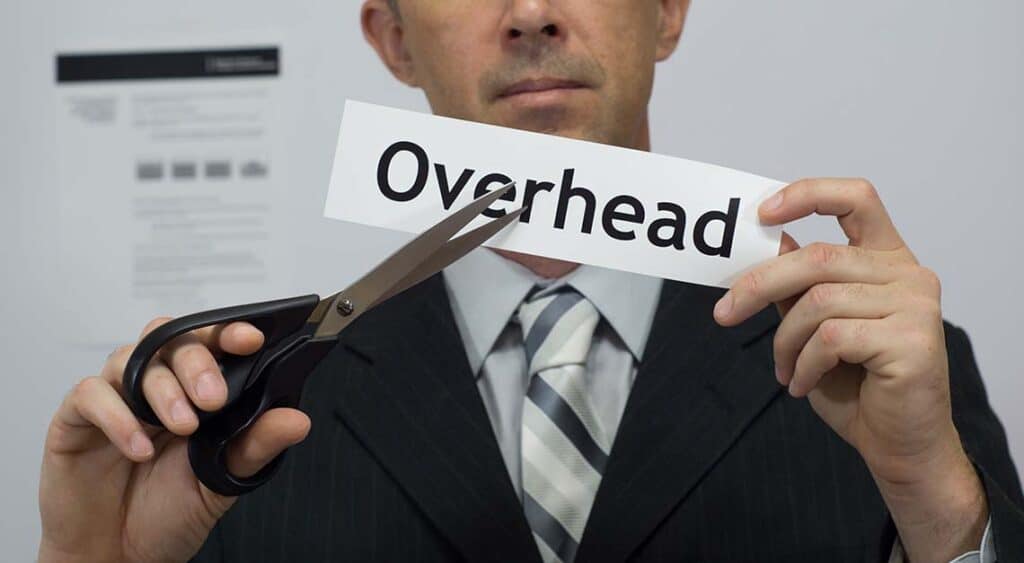As we discuss in our founding story, many law firms don’t place enough emphasis on lowering overhead to improve the bottom line. Instead, they have an excess amount of underutilized associates and offices with more wasted space than almost any other profession. This can lead to fundamental financial problems, because overhead is a defining factor for how profitable a law practice is.
Since your overhead costs are disproportionately employees and office space, those are the areas you should prioritize and focus on getting right. And that’s what this article is going to address directly.
Contents
1. Using Freelance Lawyers as Part of Your Law Firm Staffing Strategy
2. Reducing Office Space Costs
-
Models from Other Industries (Learning from Accounting and Consulting Firms)
-
COVID Changes
3. Condensing or Reducing Office Staff
4. Avoiding Clients That Are a Financial Drain
-
Realization Rates
-
Doing the Math
Note: We help law firms operate with reduced overhead via our nationwide
marketplace of over 3,000 incredibly talented freelance lawyers (aka virtual associates) with experience levels in almost every conceivable area of law. Learn more and sign up here.
1. Using Freelance Lawyers as Part of Your Law Firm Staffing Strategy
Traditional, full-time, in-house associate hires have high overhead costs directly tied to them. While paying those overhead costs makes sense when a lot of legal work is coming in and the associates are working at 100% capacity, the downside is that law firms are cyclical in nature — and you still have to pay those lawyers even if you don’t have work for them. And if work isn’t coming in for them to do, cash flow isn’t coming in, either.
This is where LAWCLERK, our freelance lawyer marketplace, comes in: Unlike full-time associates, on-demand freelance lawyers don’t have fixed overhead costs tied to them (i.e., salary and benefits), and you only pay them when you need help and they’re actually doing work.
This allows for flexible staffing as your needs increase, without the commitment of supporting the same amount of staff when needs decrease.
We’ve helped thousands of busy attorneys nationwide get an extra set of hands without the overhead of full-time associates, and while this is a major advantage of using freelance lawyers, we discuss other benefits in this recent post:
How to Effectively Staff Your Small Law Firm (COVID-19 Implications)
In addition, we recently hosted a webinar detailing how to build a rockstar team of virtual associates, which includes information such as:
-
The types of legal tasks you can delegate to freelance lawyers.
-
How your law firm can become more profitable via outsourcing.
-
Examples of customers who are using our marketplace to build teams of virtual associates — to give you ideas for your own law practice management.
2. Reducing Office Space Overhead Costs
The traditional range of office space costs for a law firm is somewhere around 8% to 15% of gross revenue. And it’s very easy for lawyers to fall into the trap of thinking they need to spend at the higher end of that range just to impress their clients — stereotypical build-outs with stone conference tables inside glass conference rooms are easy to take for granted as something clients just expect to see. So we splurge on the best materials, layouts, and construction.
But there are a few drawbacks to this thinking.
For one, clients don’t actually care about those things. In fact, it’s often the opposite — clients have no problem saying (jokingly or otherwise) that “Oh, so this is what my money is paying for.” So skipping the more ostentatious office suites can project the image of being lean and less “wasteful.”
For another, even though the pandemic has seriously changed how many law firms operate, they’re still thriving. And that’s without having many in-person interactions with clients.
Office spaces have become largely places for employees to work, without the need to impress clients with much more than a respectable Zoom background. Impressive furniture has become a moot point, and that may well continue into the future as a new normal now that many law firms have adjusted to this with agility.
Models from Other Industries
(Learning from Accounting and Consulting Firms)
To further make this new model work, there are a few other industries which have already made conservative office spaces work for them, and we can learn a lot from how they operate. Specifically, the Accounting and Consulting models of work usually involve spending more time at their clients’ office spaces than their own.
Traditionally, legal businesses probably have more wasted real estate than many other types of client service businesses. There are big lobbies, big offices, and big conference rooms, because clients have historically come to us, and we want them to be impressed with our success.
But businesses such as accounting or consulting firms often have the upper hand on how much space they don’t need.
Besides the obvious need for less furniture, conference rooms, or square footage in general, by going to their clients’ spaces to conduct business, they’re actually fostering a stronger relationship with their clients.
Clients appreciate it when you’re willing to come to them, and this also allows the professionals to get a deeper understanding of their clients’ businesses with a first-hand look into how they operate.
So besides just saving money on conference spaces, going to the client makes them feel that much more invested in the relationship, because you seem more invested in the relationship to begin with.
And that’s in addition to reducing overhead by saving on office costs.
COVID Changes

Pre-COVID, a lot of businesses were headed for more communal working situations: Open office spaces and coworking setups were becoming common. But with adjustments for the current pandemic, work spaces need to be a little more flexible.
Lawyers may still go in to the office to conduct legal services, but perhaps not every day. So office spaces now need to reflect what they’re actually doing, not just what they used to do.
What law offices were primarily used for:
-
Meeting clients.
-
Reading opposing counsel.
What law offices are primarily used for now:
-
Working individually.
-
Preparing for trial.
-
Compiling documents.
-
Getting mailings ready to go out.
Yes, all the things we’re still doing in offices, we used to do before. But we may not have considered those the primary focus of what we previously needed to go into the office for.
Now that we’re operating under very different circumstances, our spaces can and should change to reflect that — especially if it can help us reduce overhead.
Considering COVID-era changes transitions us into …
3. Condensing or Reducing Office Staff
From the bottom up, law firms tend to be overstaffed with too many people. But for some, it’s become a more obvious problem during the pandemic. The solution is to think creatively about which roles you actually need on full-time staff, and which you might be able to contract out.
For example, someone such as a receptionist can be provided virtually by a contractor, especially if there are so few people actually walking through the door. This can not only eliminate redundancies but also ensure there is always someone available, as sick days are not an issue with a contracted firm that has a deep supply of staff.
Another option is to consider switching from an in-house runner to a locally contracted one. Especially if in-person business has been fluctuating due to less people being in the office, it may not make sense to retain a full-time staff runner. Calling up a vendor to handle local deliveries as needed may be much more economical for your needs.
Other roles you may have less need of are assistants or paralegals. While traditionally, many lawyers have spent less time in front of a computer, newer, younger generations of lawyers are often very tech savvy and come much more self-contained right out of law school.
While they may still need support from an assistant, one assistant may be able to do less for each lawyer, making it easier either to reduce the amount of assistants overall (as one can cover multiple lawyers) or to retain them only part-time.
4. Avoiding Clients That Are a Financial Drain
We’ve all had those clients who, perhaps from the minute they walk in the door, we know aren’t going to be profitable. And an easy way to reduce overhead expenses is to just not take them on as a client in the first place.
This can be tough to do, because it’s easy to think, “We need all the work we can get.” But that’s not how the numbers actually work.
Realization Rates
A typical realization rate for a law practice is 85% — meaning that about 85% of invoices actually get paid. That means that right off the bat, 15% of your invoices don’t get paid — and those are the clients you’d be better off avoiding entirely.
These clients are the ones that are needy, time consuming, or simply difficult. You should be able to get a sense for this up front by assessing their attitude about the legal work they need done.
For instance, these clients don’t have realistic expectations about their case. Or they think the law is a certainty and don’t have a good concept of the nuances involved in how legal matters are decided. Worst of all, they may think that if their case isn’t won, it’s specifically your fault.
Making a conscious effort to turn away clients like this has done wonders to boost a firm’s bottom line. Law firm realization rates can go up by 10 points (or more) — meaning that, while a firm used to get paid for 85% percent of our invoices, they now get paid for 95% of them.
Doing the Math
The math on this is important, because it can add up to a lot of money.
Let’s say you’re a lawyer charging $325 per hour, and you bill 1,650 hours per year. Having that additional 10% of hours actually being paid in full would be an additional $53,625 per year in your pocket — just by avoiding problem clients.
In this way, you’re not even doing more work; you’re simply getting paid more consistently for the work you’re already doing. And that can make an enormous difference to your law firm’s bottom line and profitability.
Note: We help law firms operate with reduced overhead via our nationwide marketplace of over 3,400 incredibly talented freelance lawyers (aka virtual associates) with experience levels in almost every conceivable area of law. Learn more and sign up here.



















